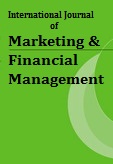ABSTRACT
The agency model has always been the most popular mode of selling insurance. The agency concept involves the recruitment of retired persons, housewives, self employed individuals or even students. The life insurance company provides professional training and gets them to target their acquaintances, friends and relatives and sell life insurance products. This strategy has always been used by life insurance companies because of the fact that in India, life insurance is still sold and not bought. The functioning of the agency model is always the biggest challenge to an insurance company since this group of people leaves the company without hesitation. Agents have by far been the most disloyal to the company especially in the case of private companies. In the recent past Bankassurance has gained a lot of popularity where in a person is forced to buy an insurance policy when he approaches the bank for a loan. However the success of a life insurance company is directly dependent on the training and development and maintaining of its agents. Insurance companies now have both individual and corporate agents selling policies on their behalf. India’s private life insurance companies had examined the well-entrenched LIC’s model of tied agents in detail and found it easy to replicate. They tweaked the overall branch-led operating model but retained the basic structure of brick and mortar branches and agency managers (or development officer in LIC parlance) on their payrolls i.e., the agency manager was an employee on fixed costs with some variable component. This made the agency in times where it is important to conserve capital and allocate capital to resources that will deliver sustainable returns; no insurer can remain rigid in their distribution or operating model.
This study evaluates the performance of private and public sector agents and analyses the need for insurance companies to move to other models for marketing life insurance.
Key words: Insurance, Agency Model, Performance, IRDA

